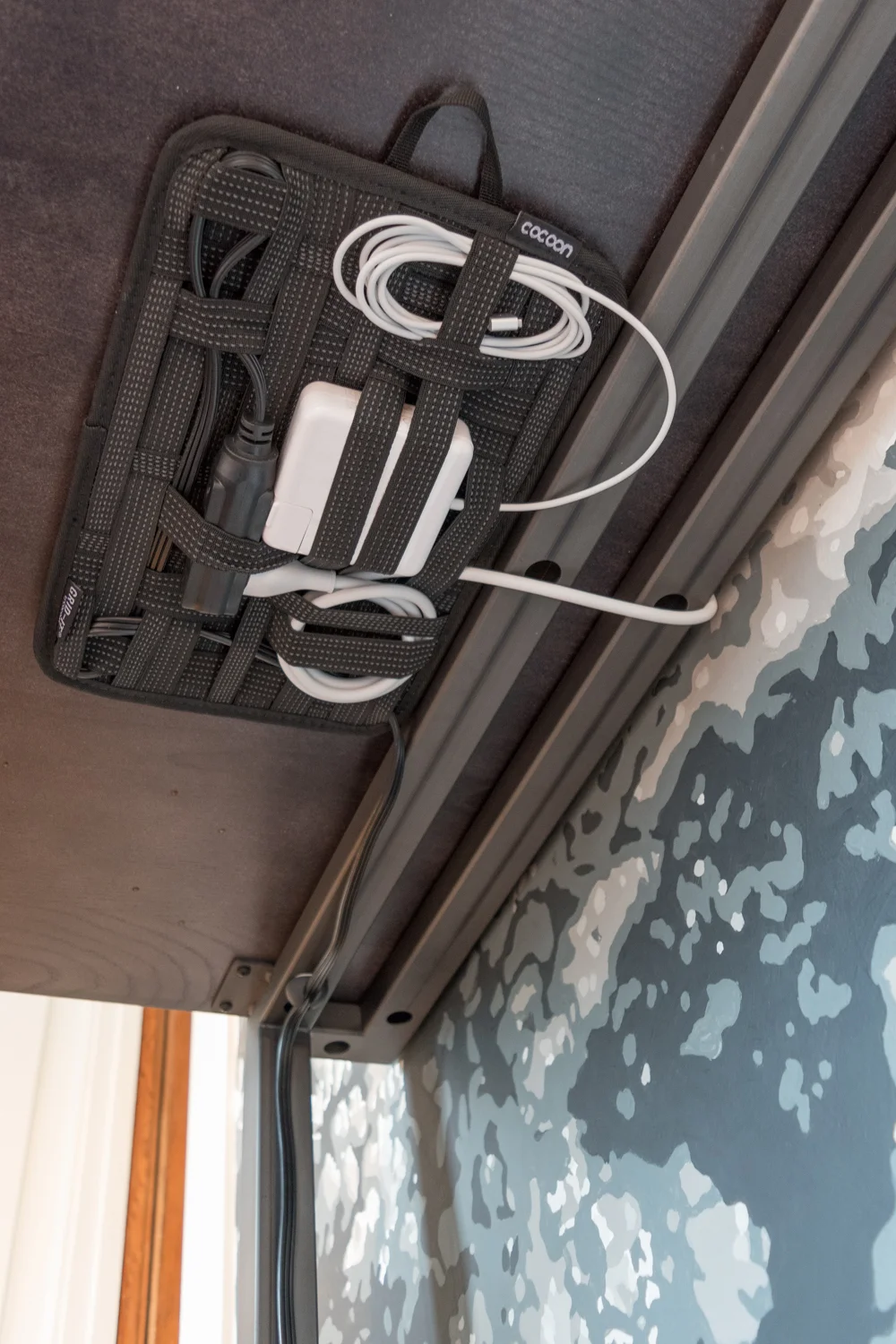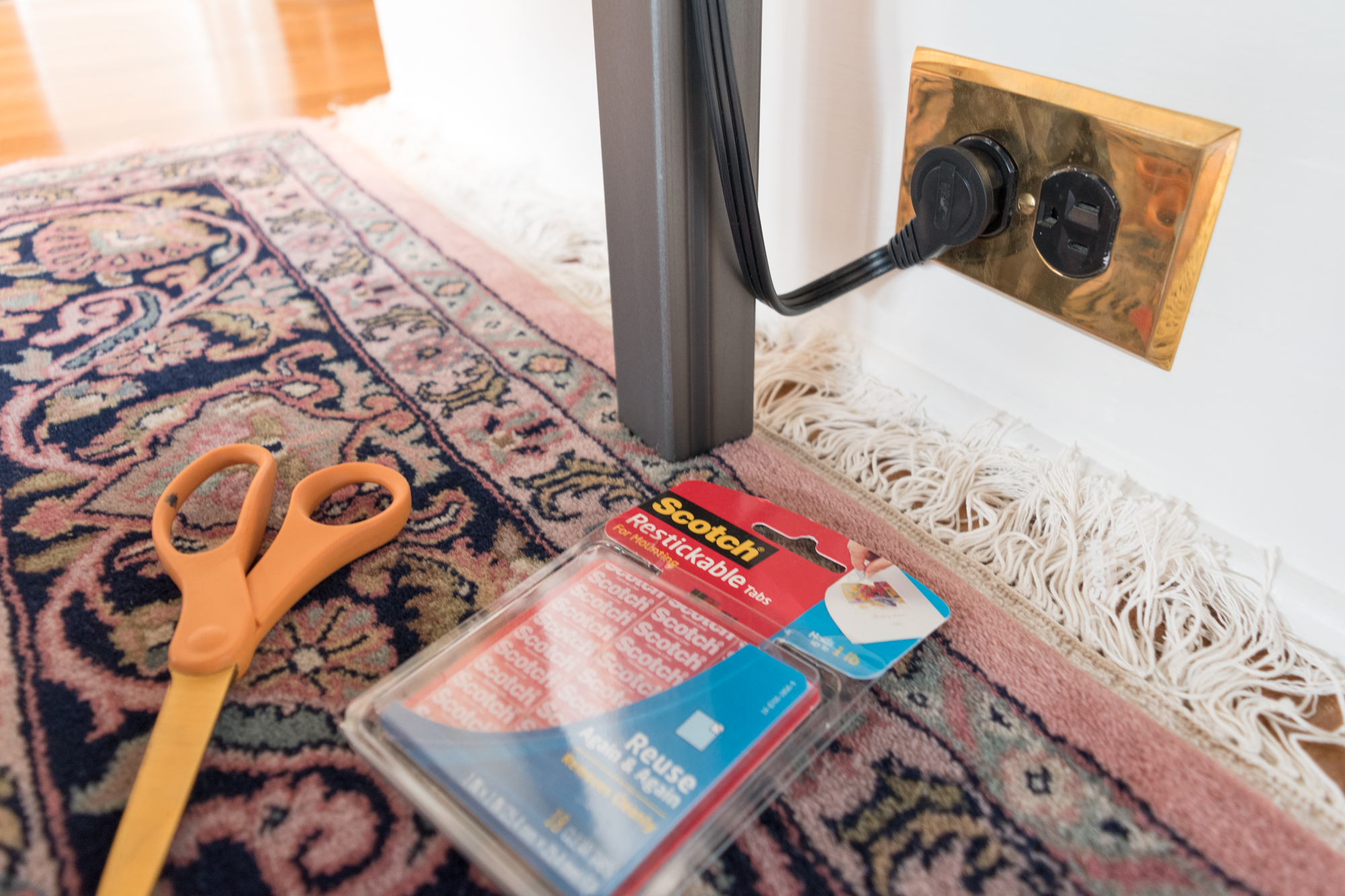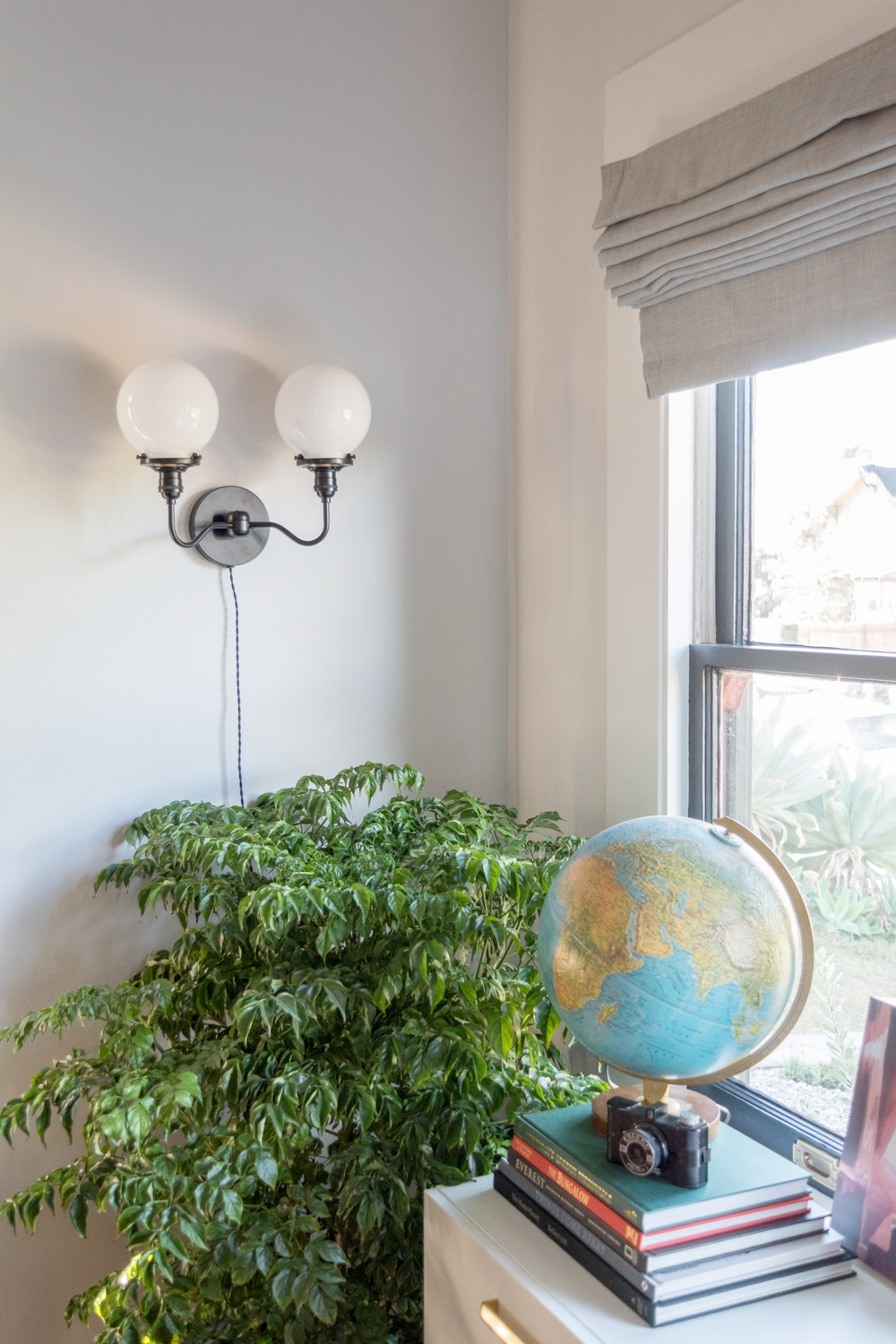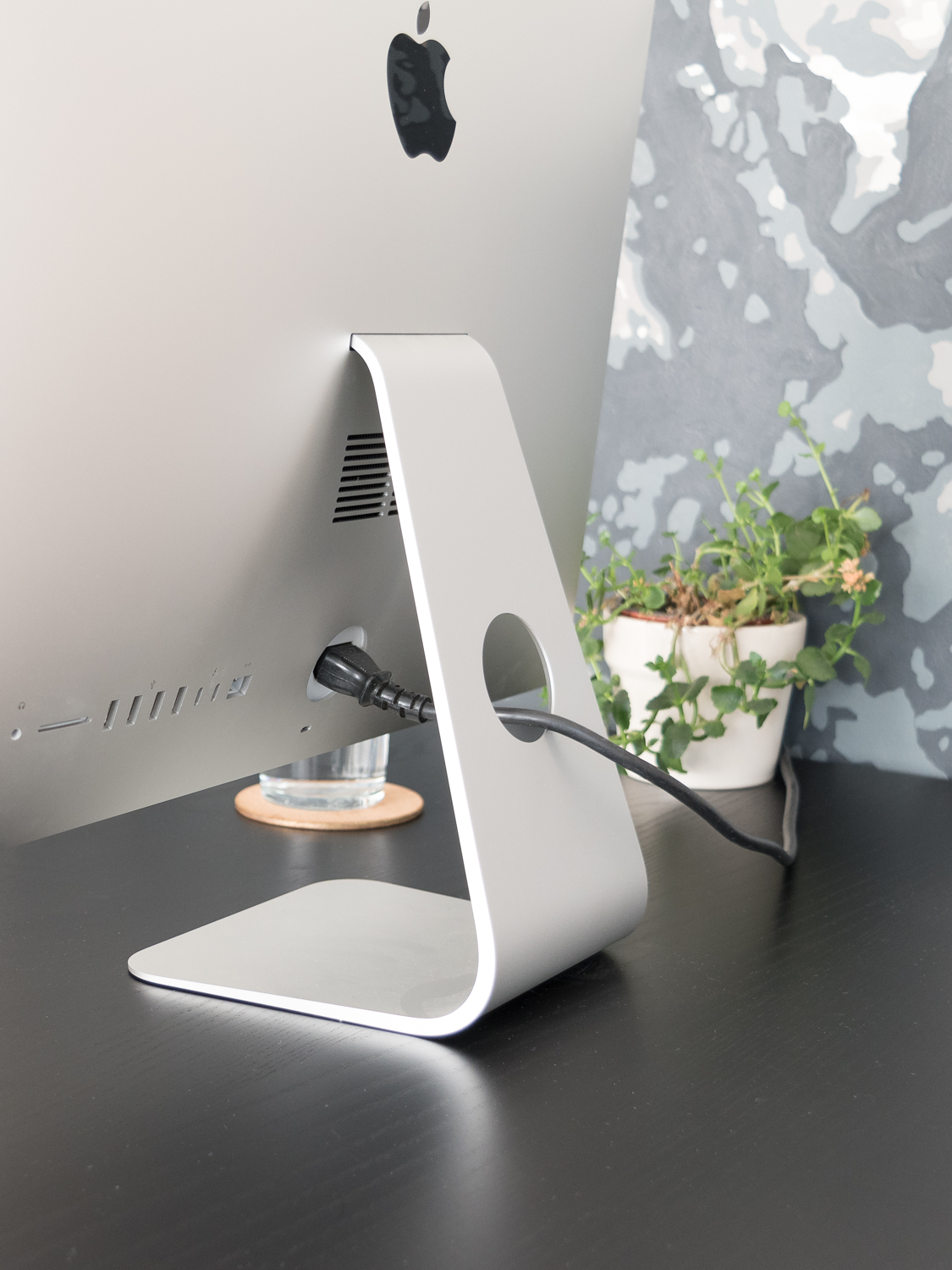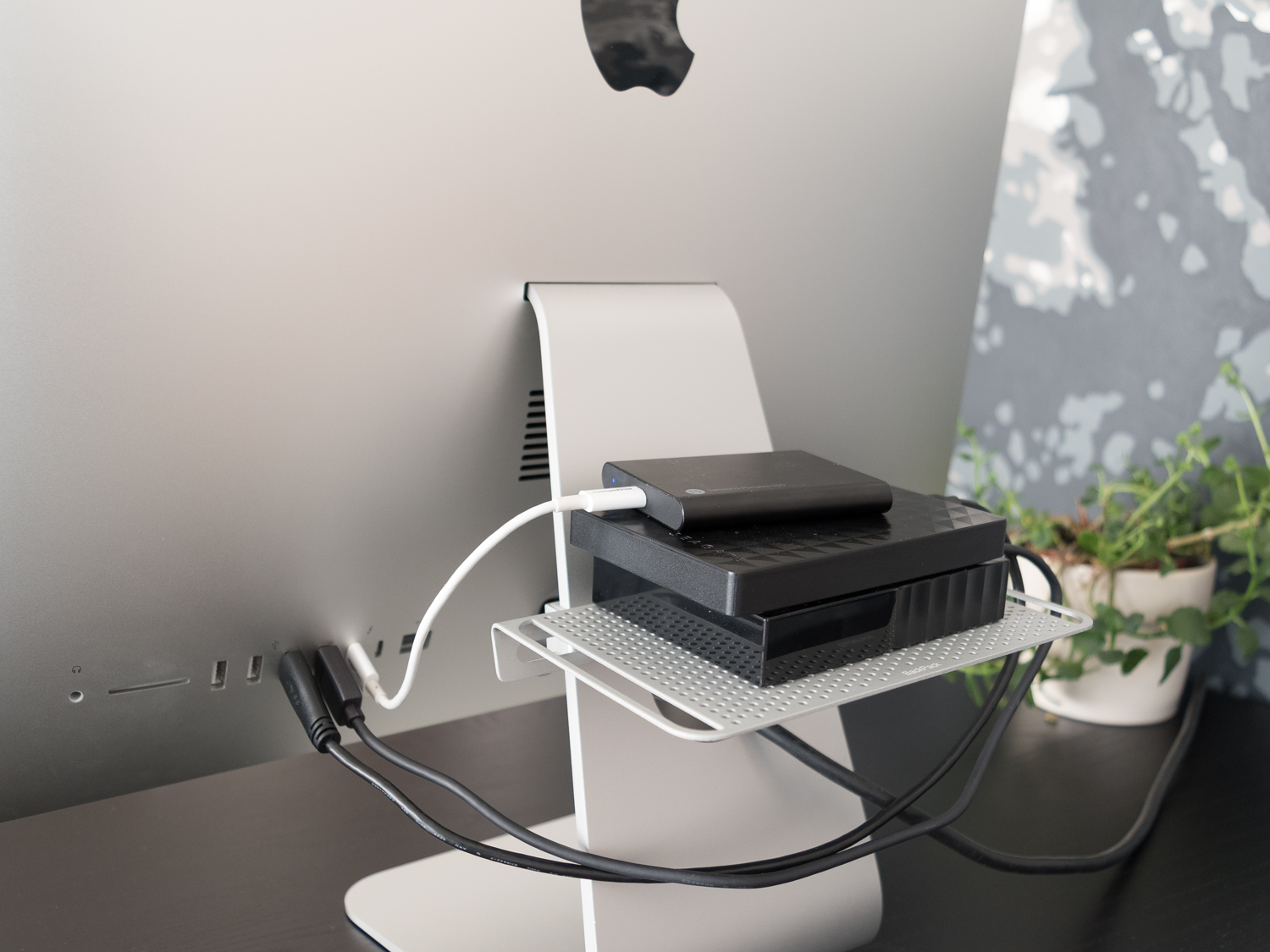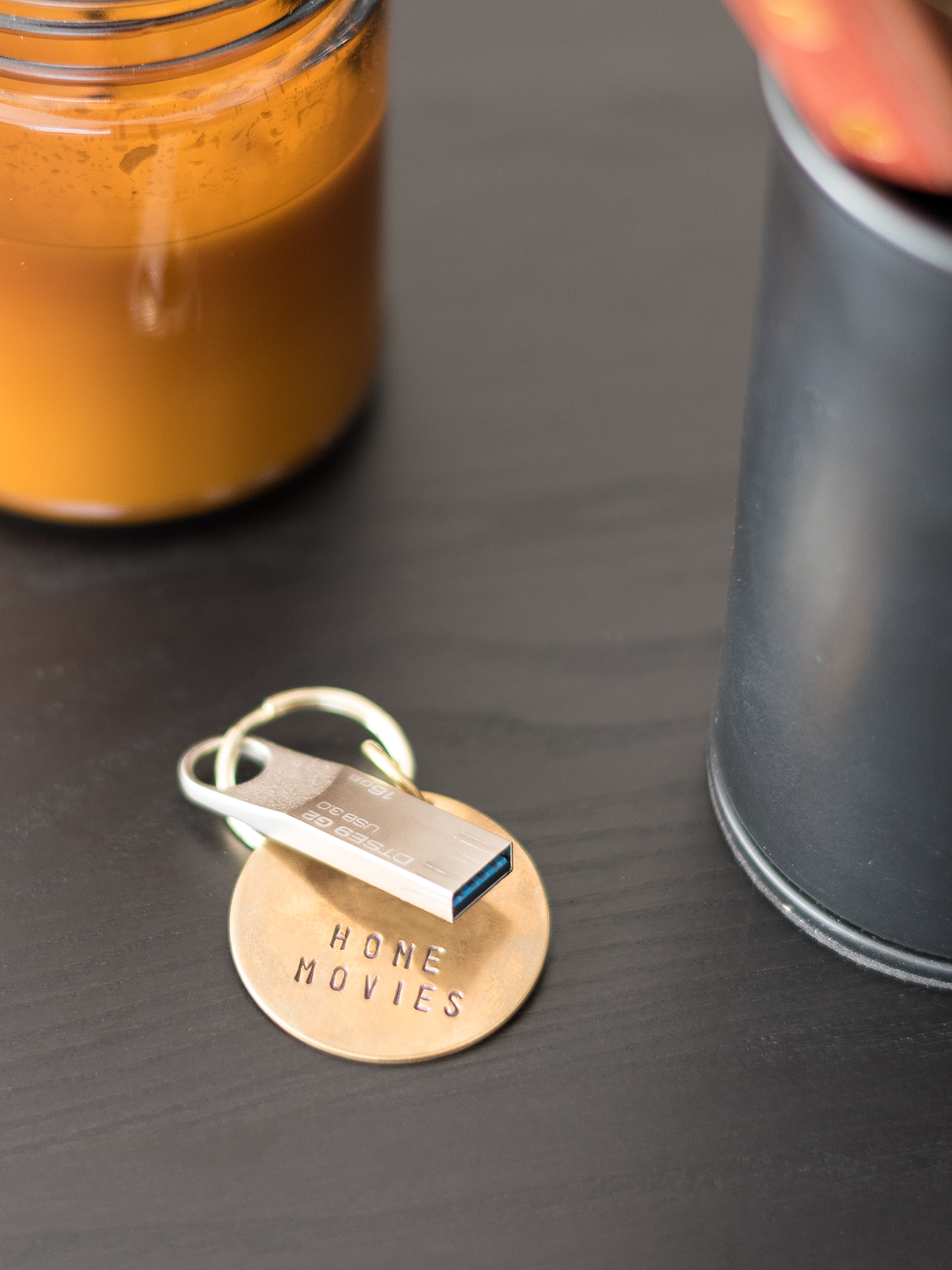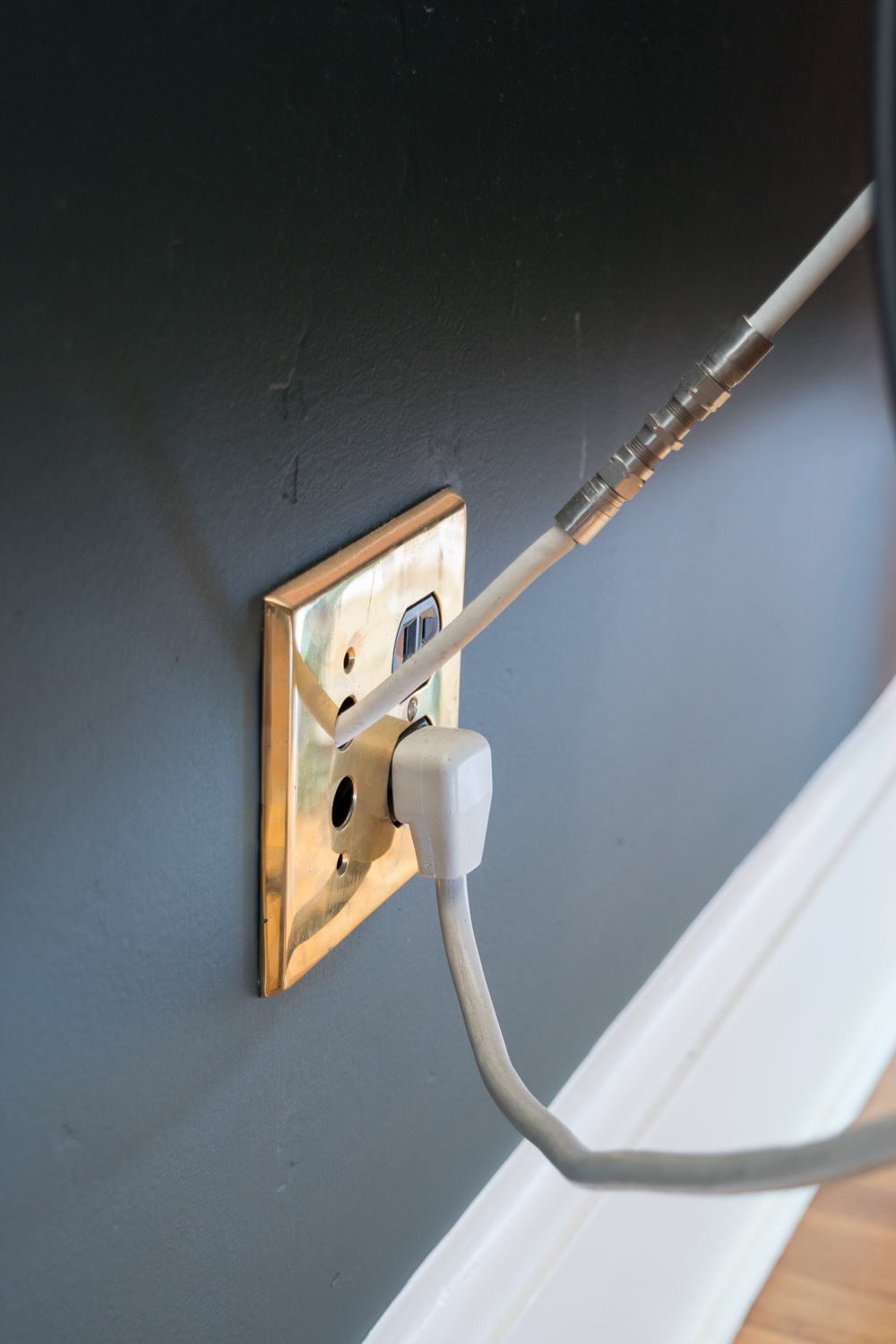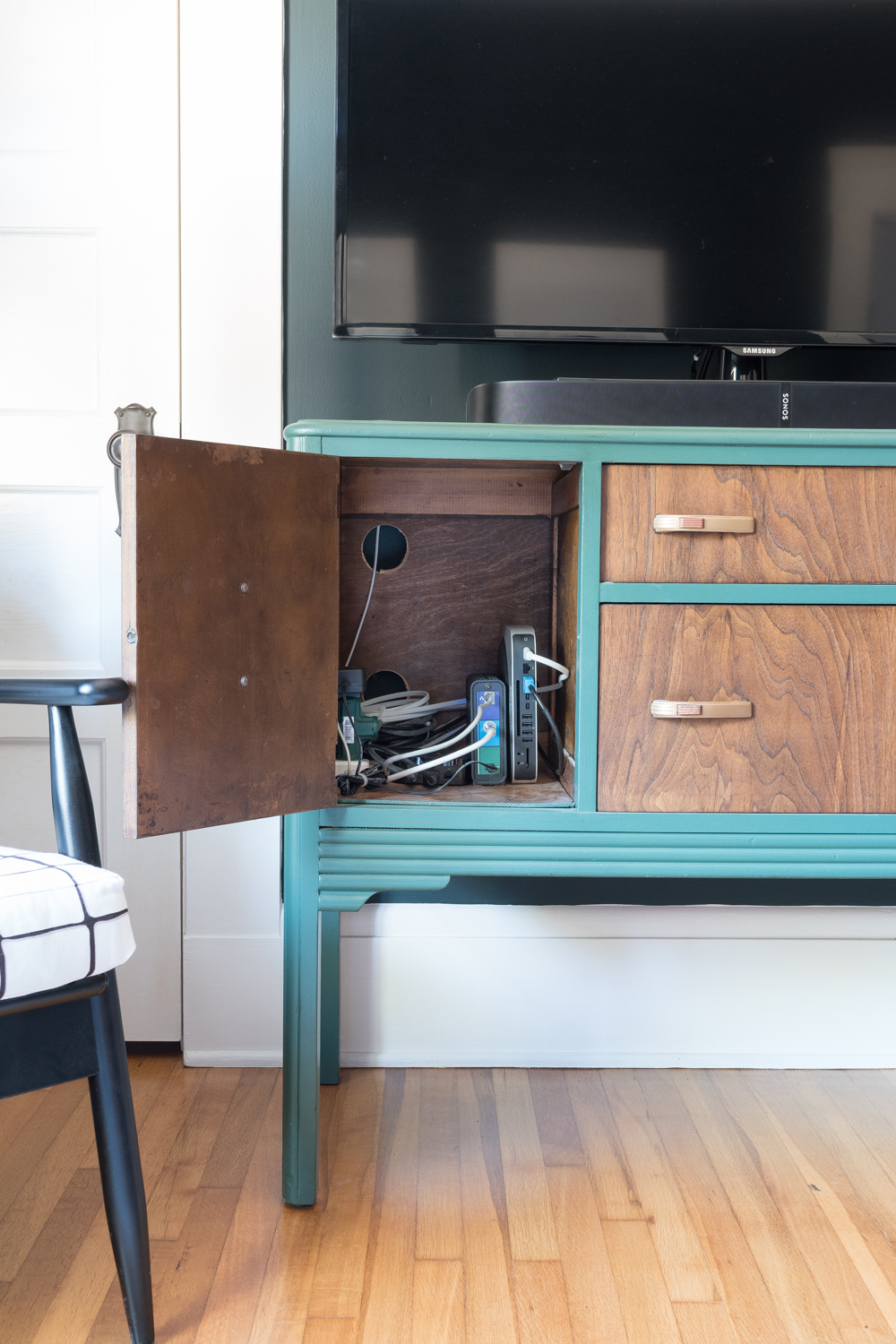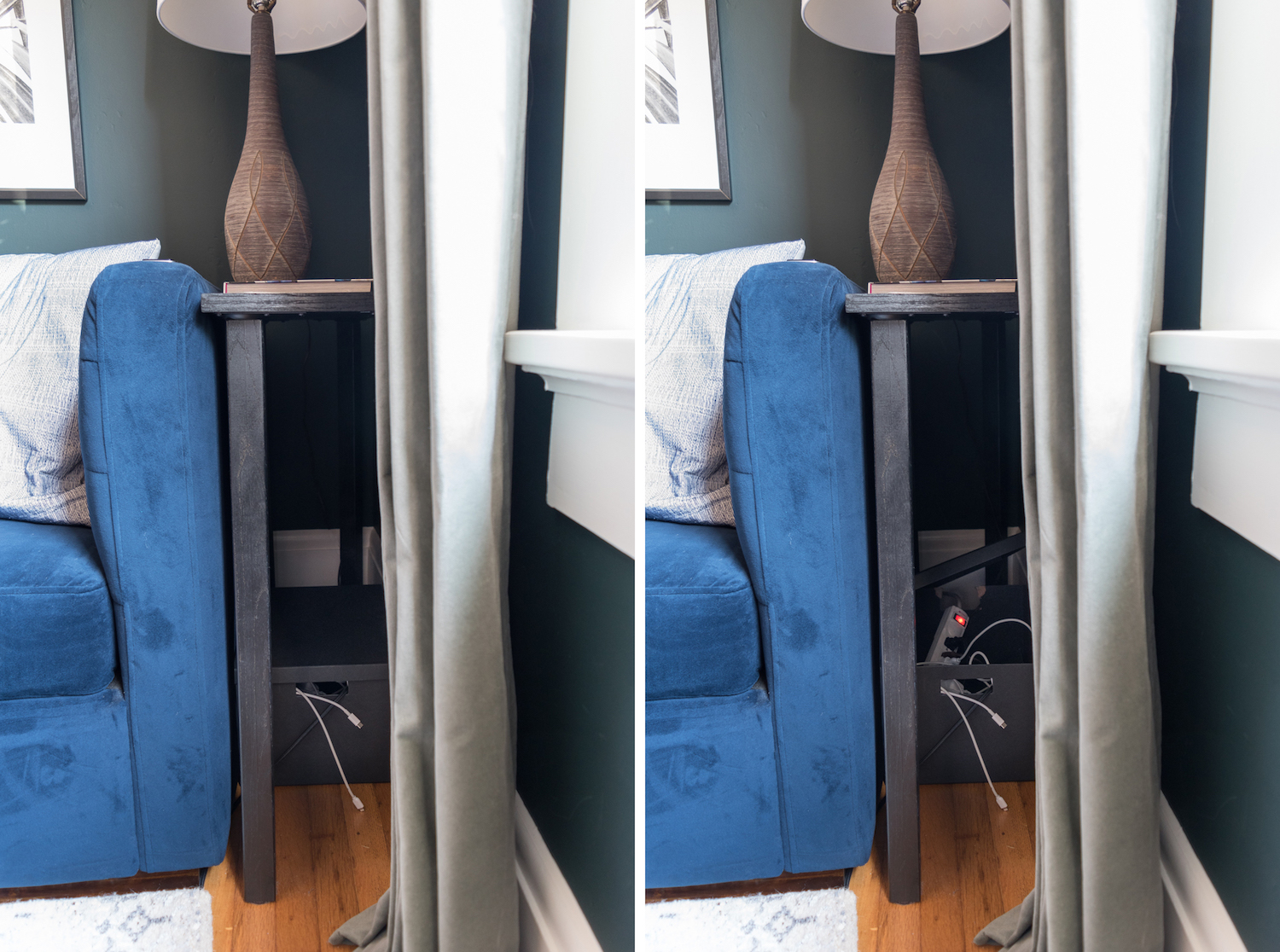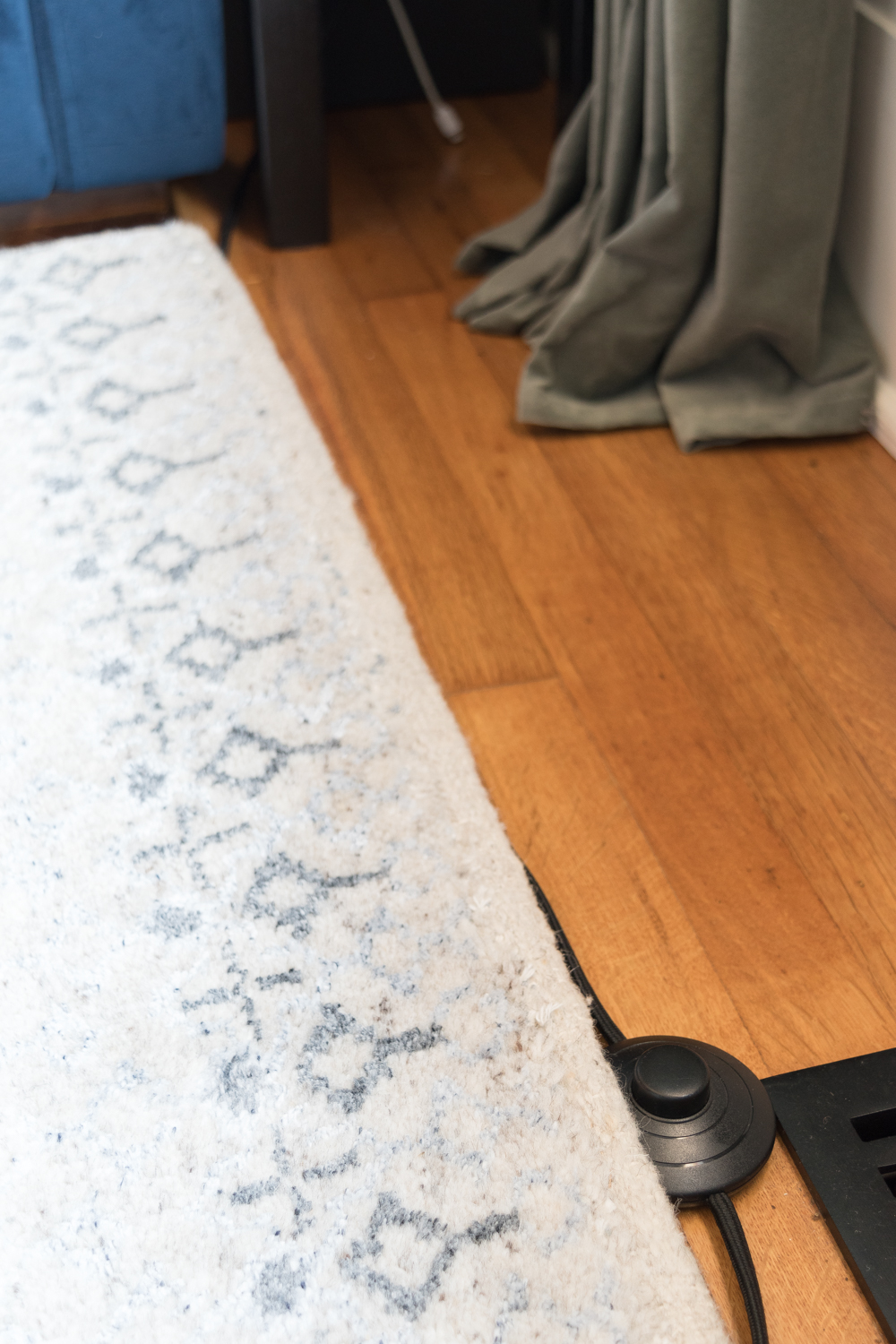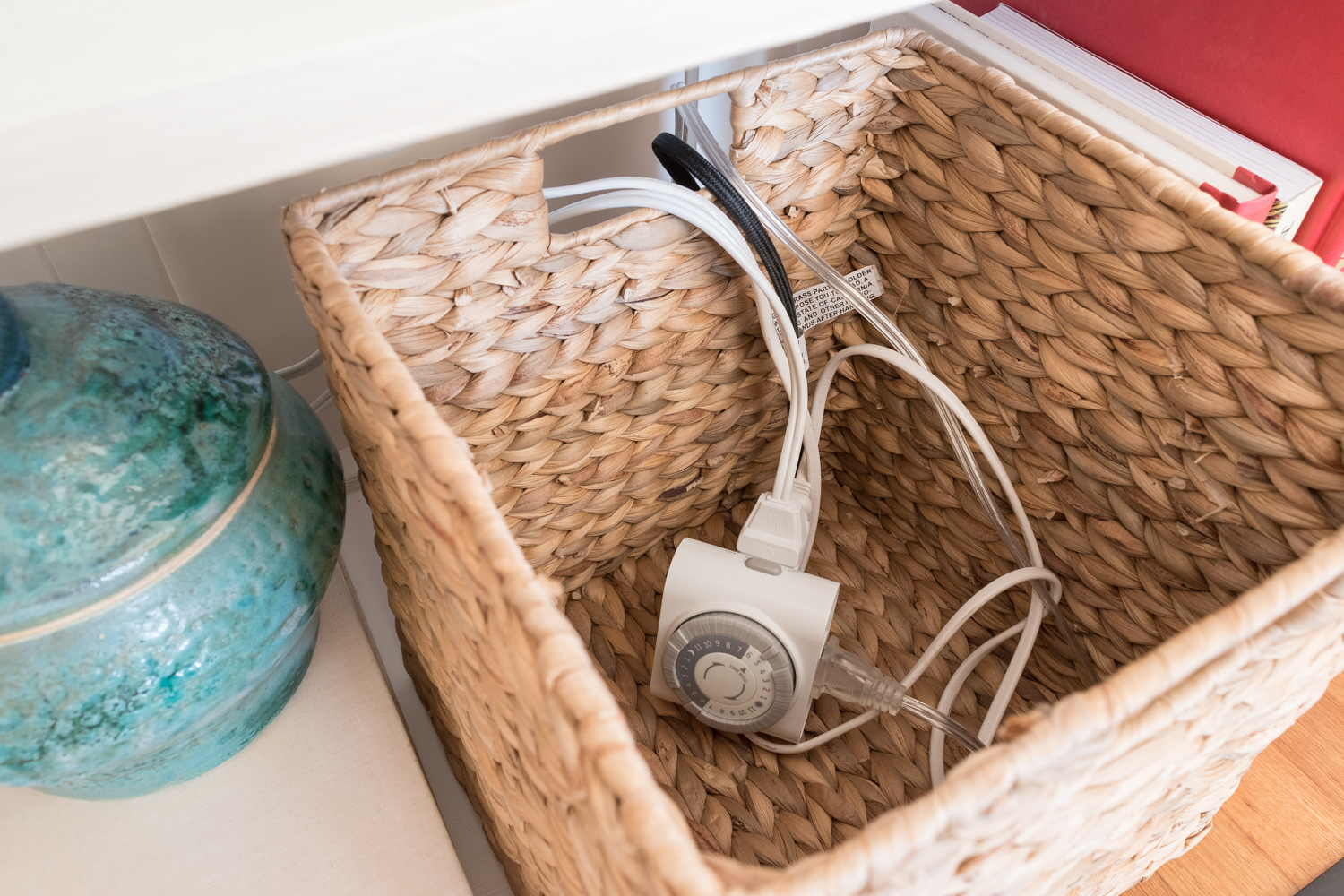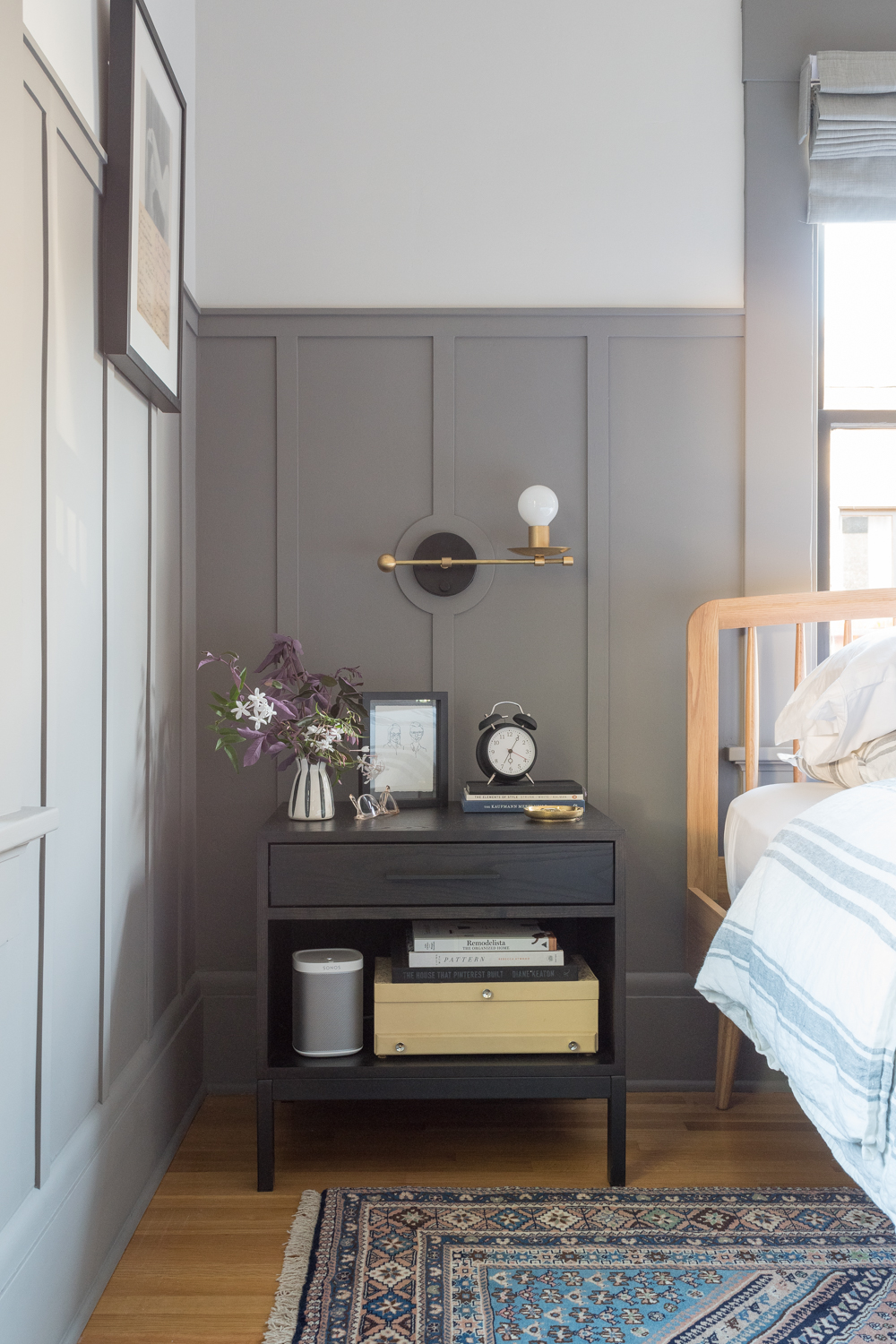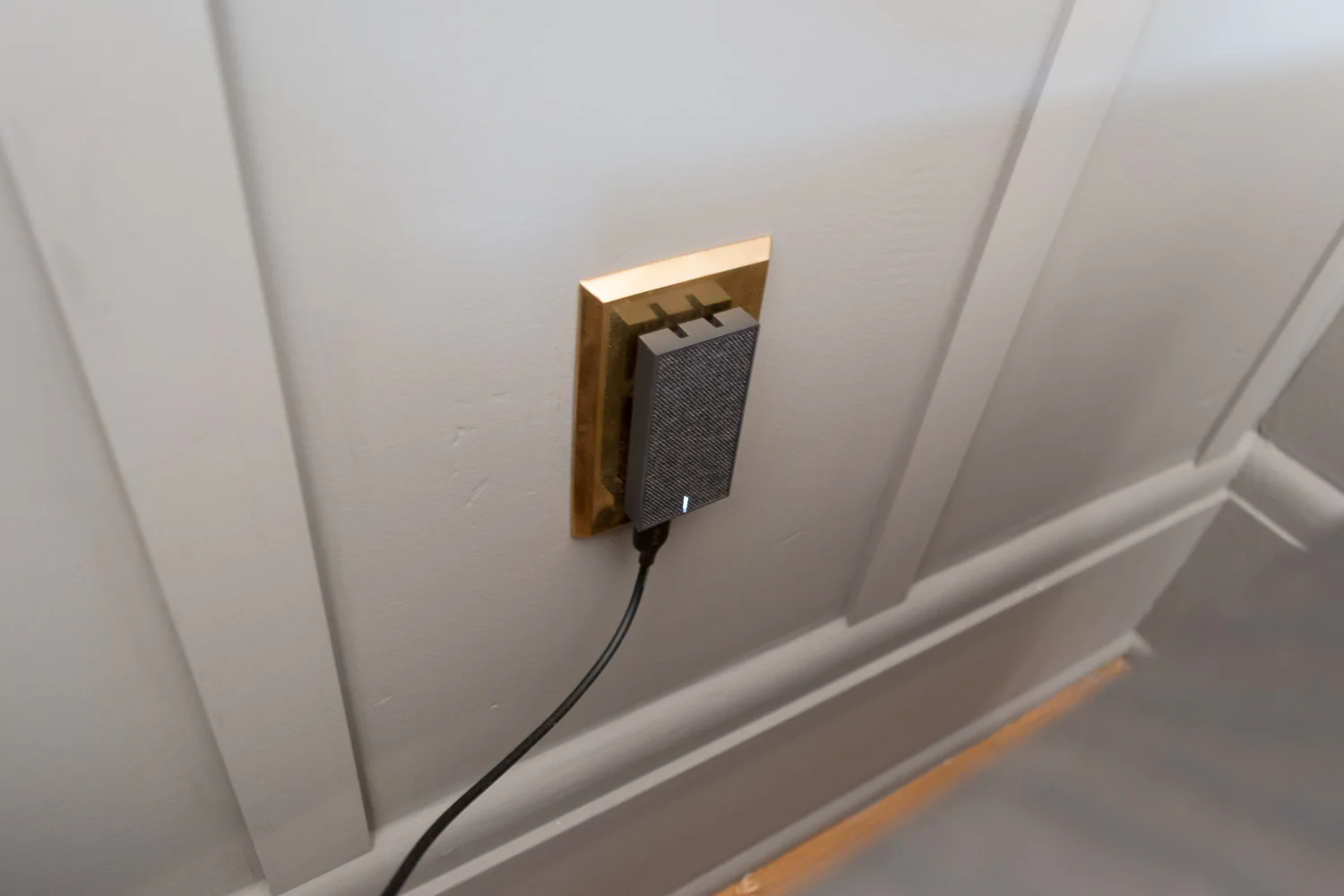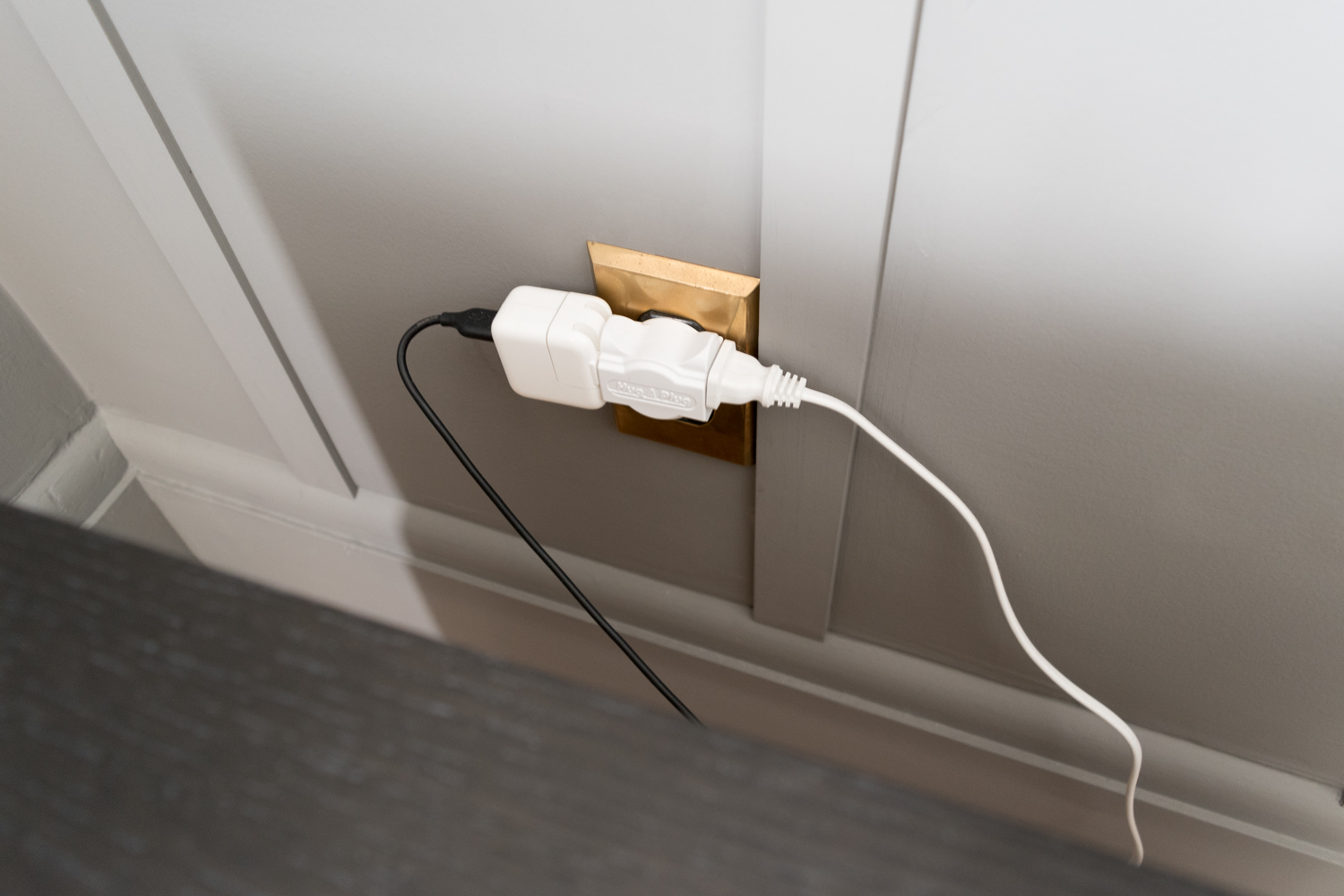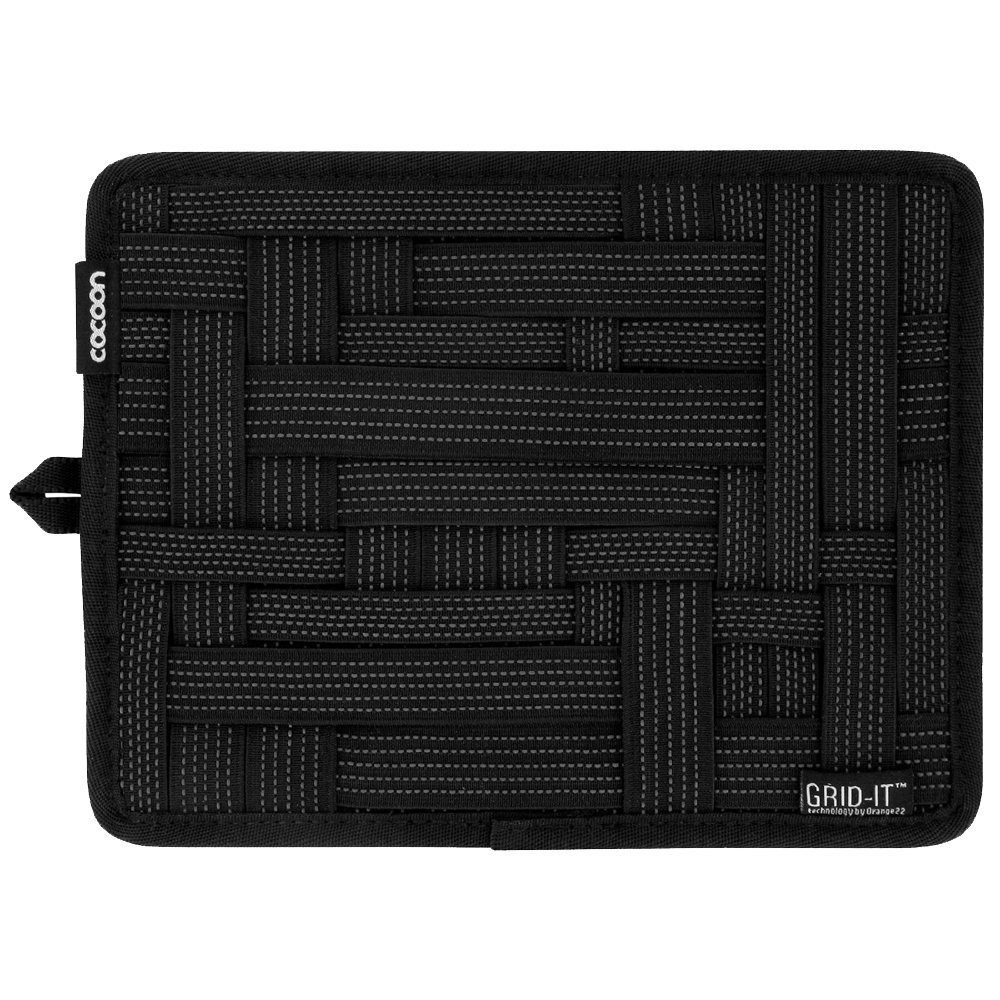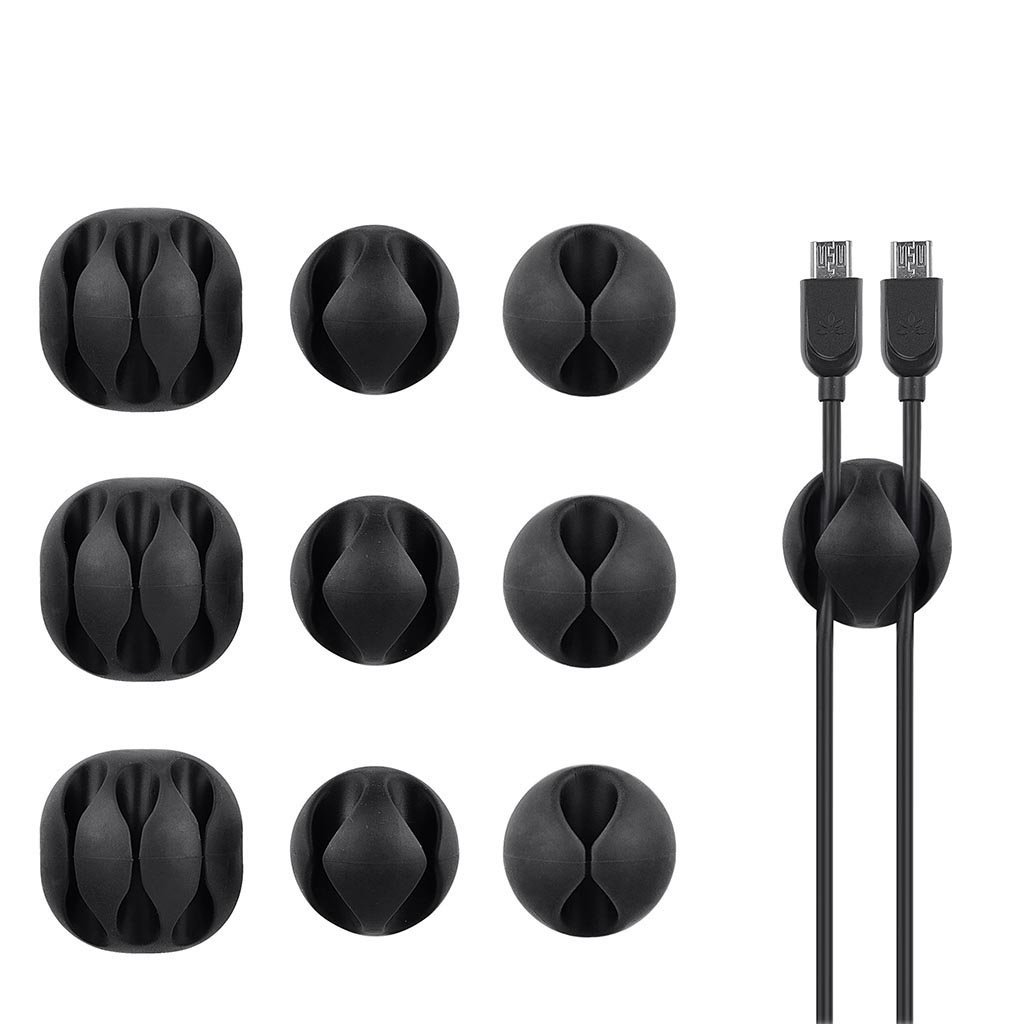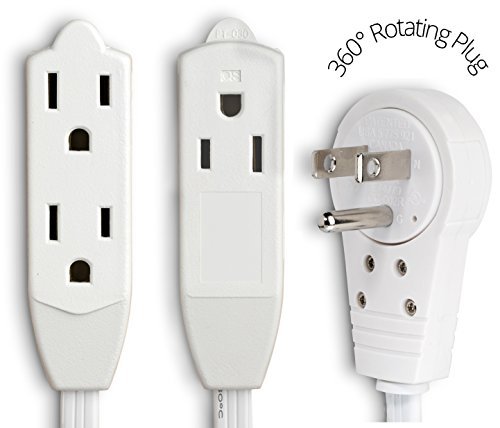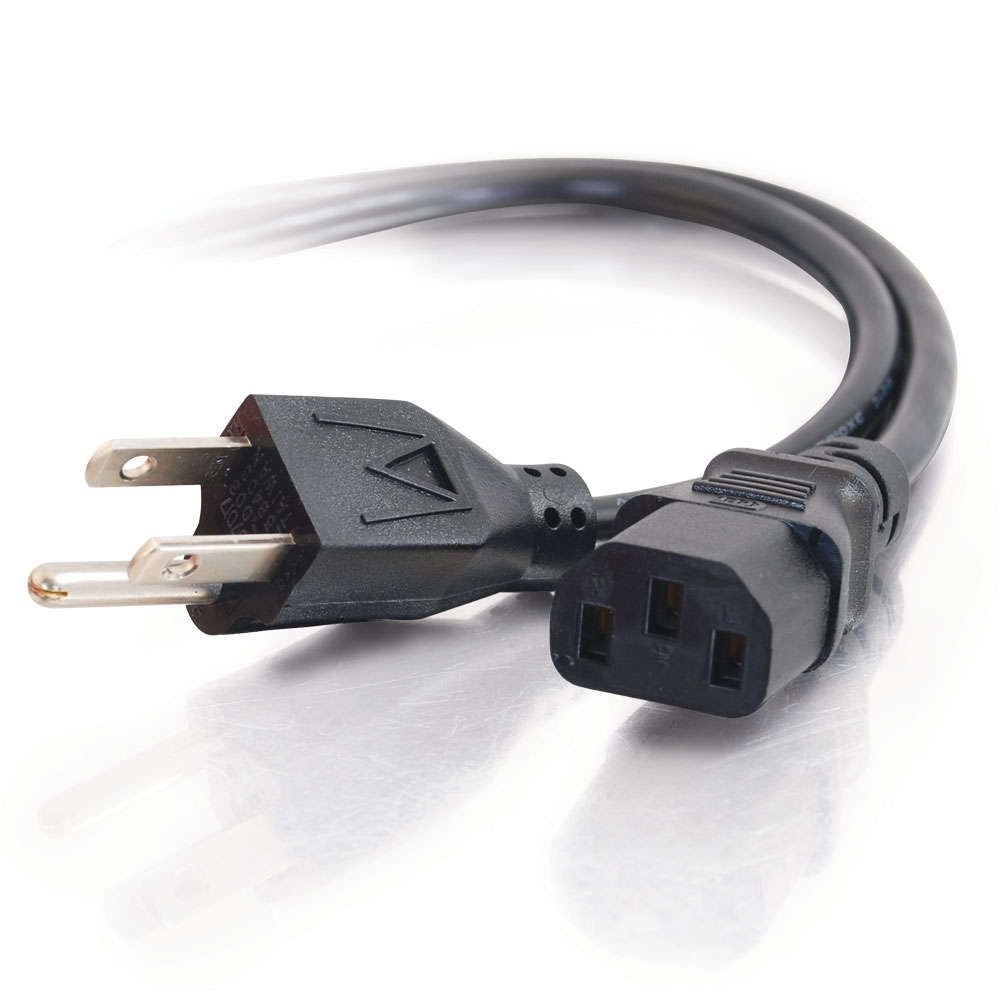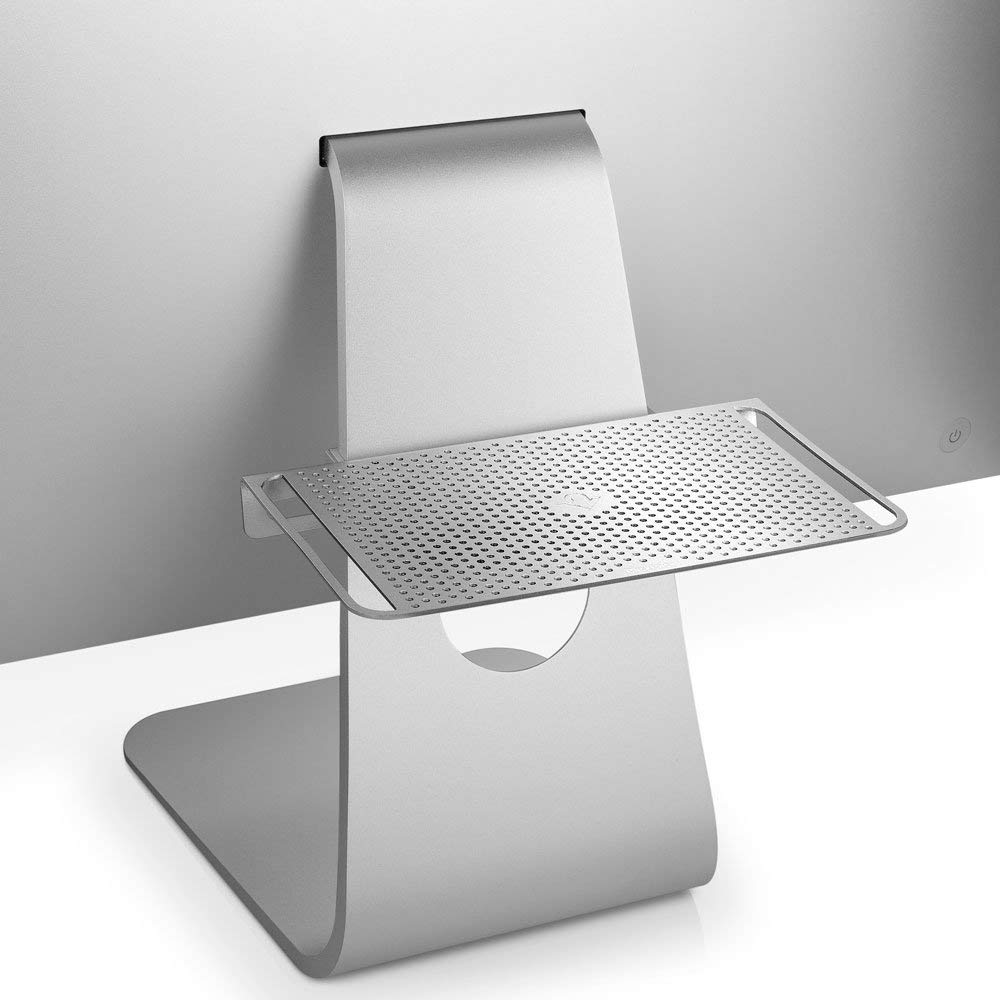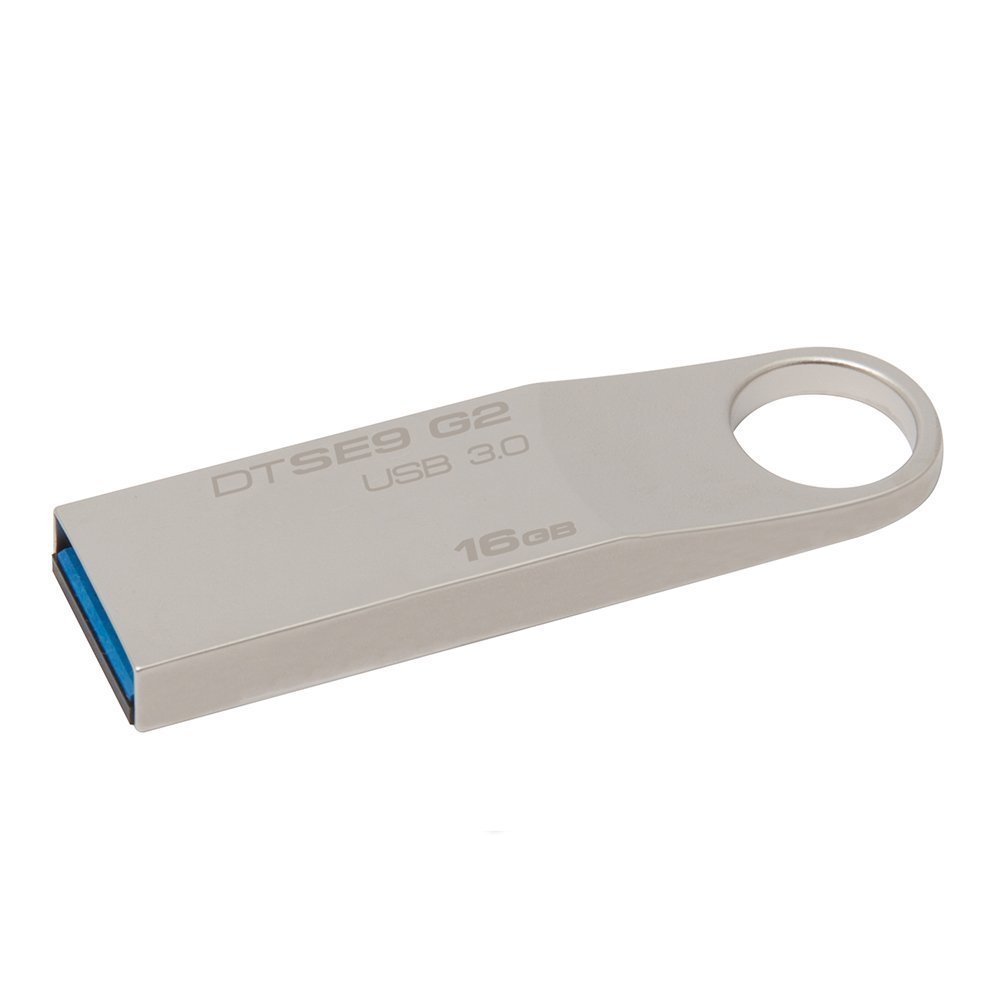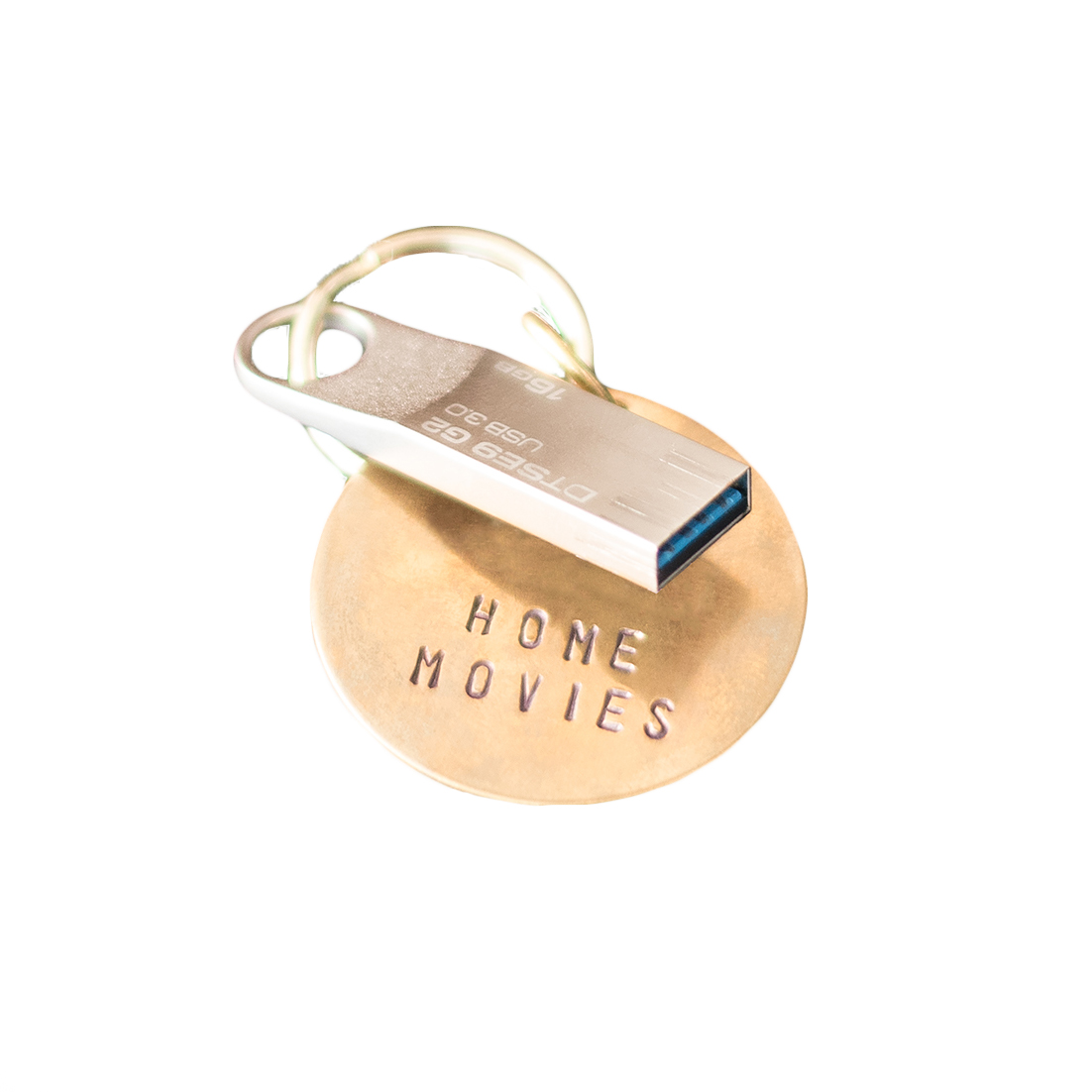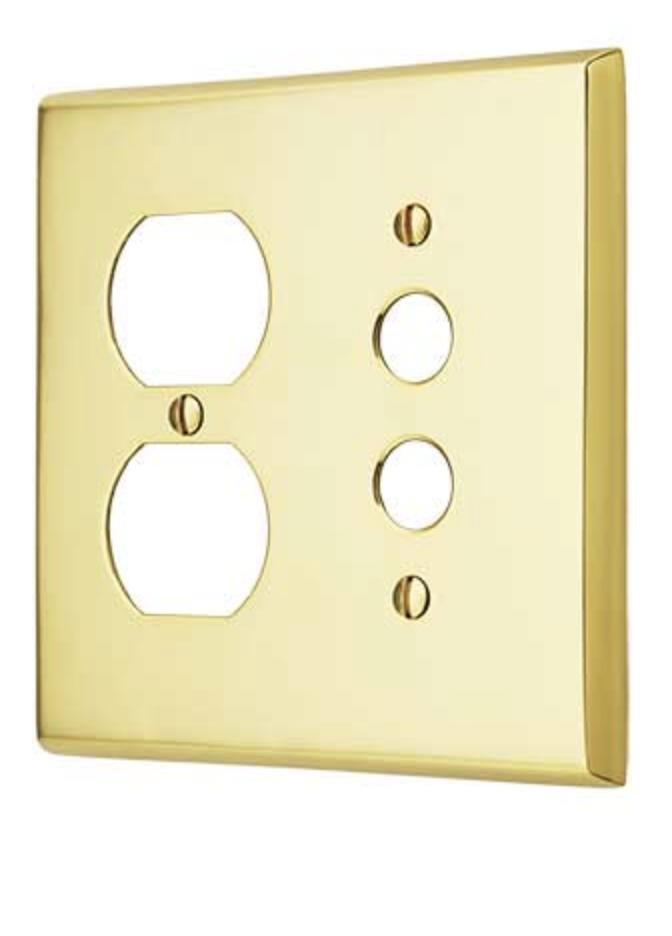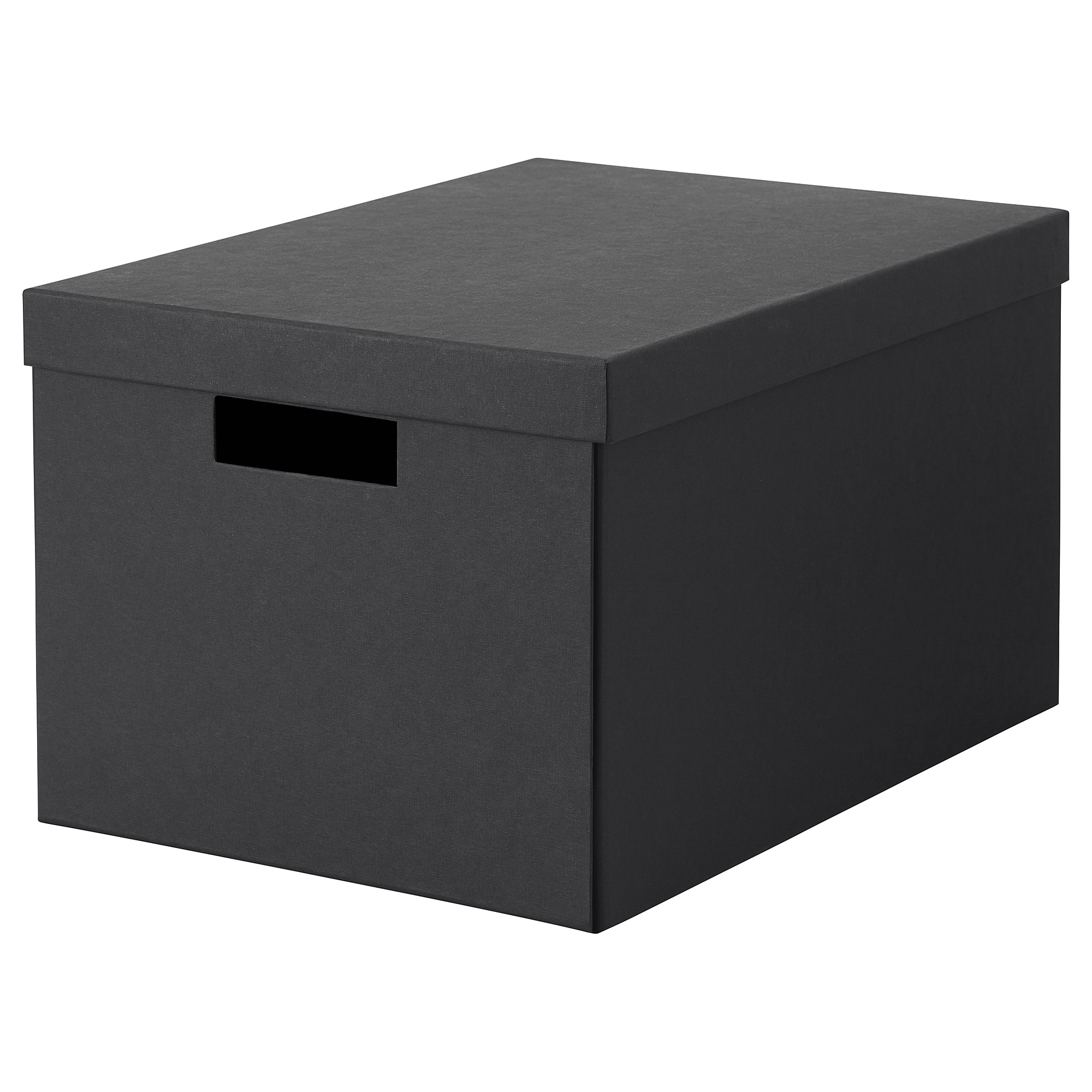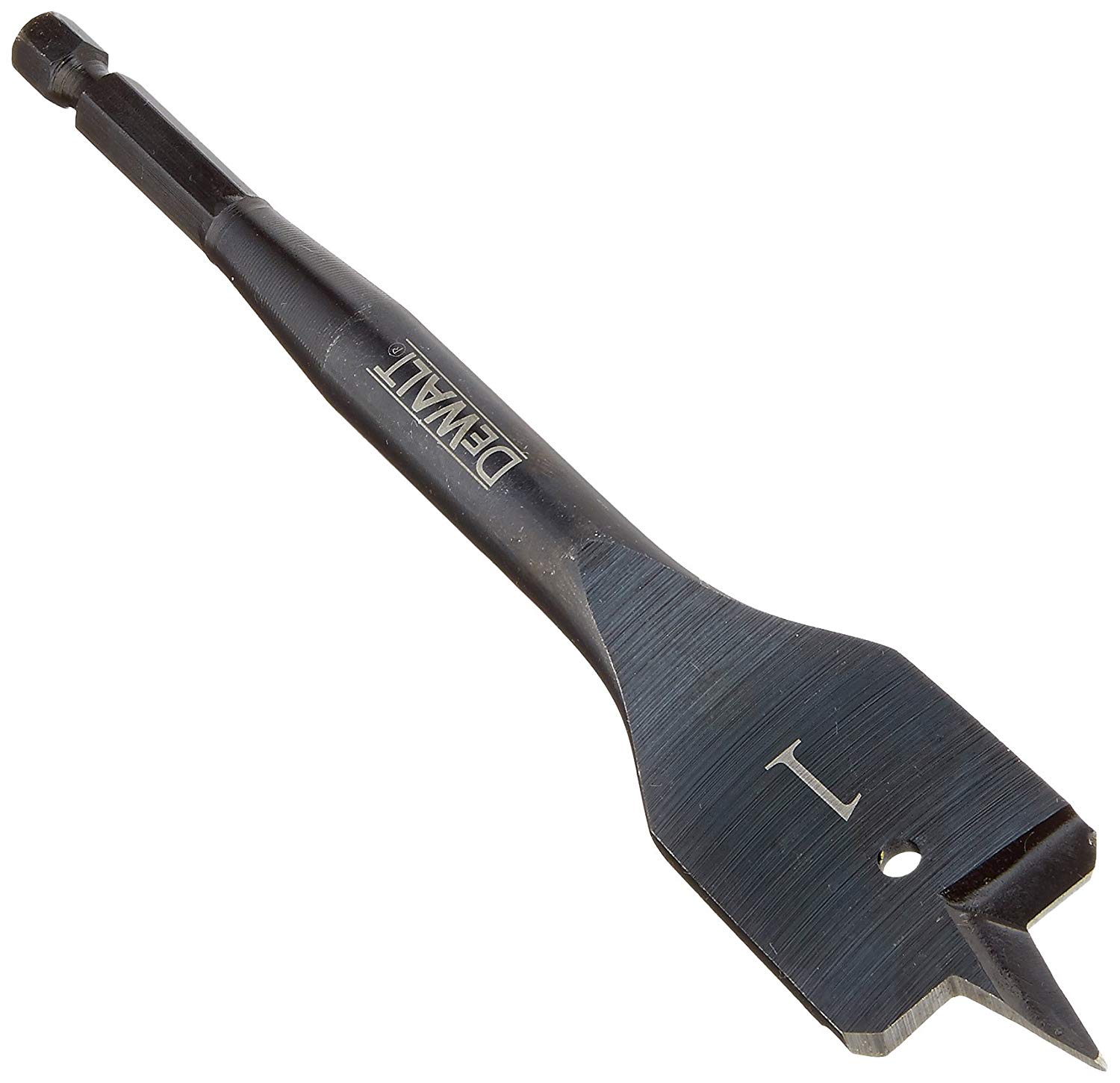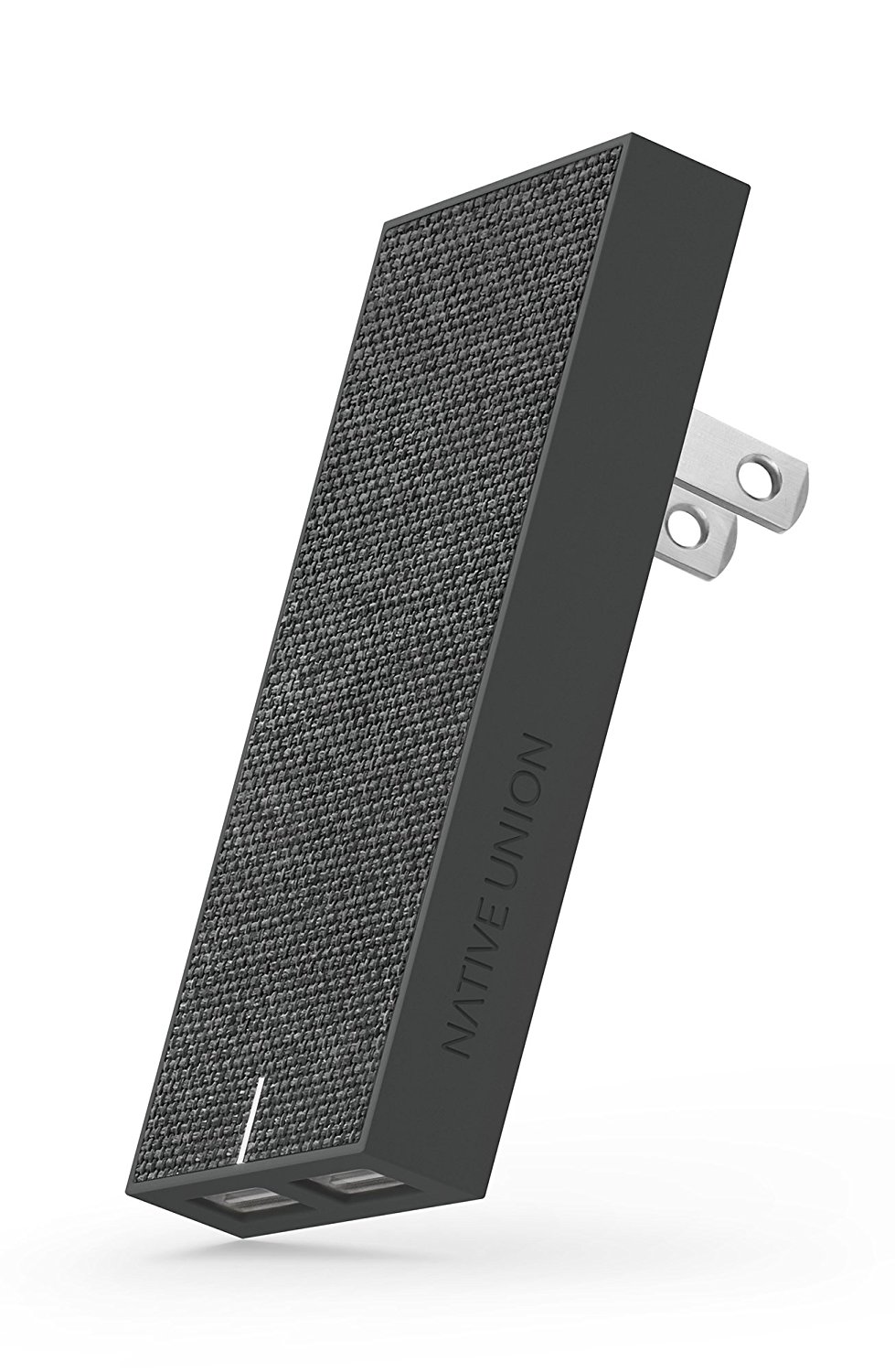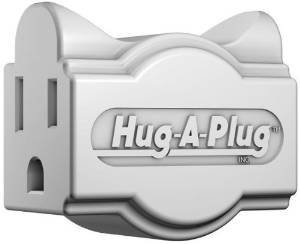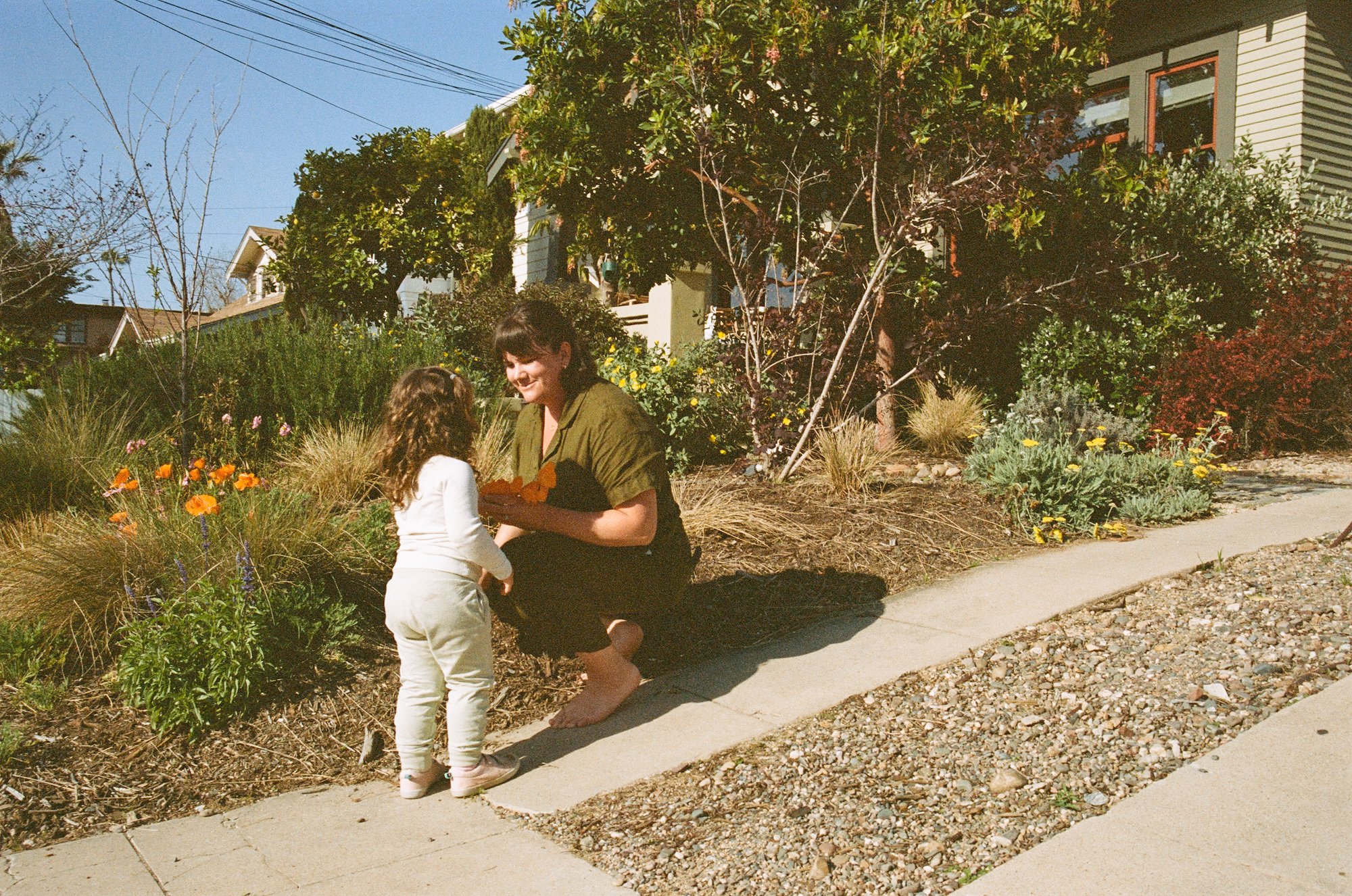How to Hide Cords, Plus All My Tricks for Cable Management
/We're techy people but don't like the sight of power cables or lamps cords in the house. Each room has a cable management trick unique for the application, and they're so simple that anyone can do them. Plus, you don't need to go buying a bunch of washi tape and save three month's worth of toilet paper tubes to make some weird makeshift holder that dangles off the back of the desk (I know you've seen this on Pinterest).
I'll walk you through each room so you can see how we hid each and every cable, plus a few tips along the way.
The Office
Out of sight desk power supply
I'll start off with the one I'm most proud of! We have a nice big desk and the last thing I wanted were computer power cords, chargers, hard drives, and muck all over the place. There are a trillion options for cable management systems that mount to the underside or back of the desk, but most of them are bulky and promote cable tangling. Plus, I didn't want something to take away from the beauty of the desk (which is actually a dining room table) so I didn't want anything hanging underneath it like cow udders.
Enter, the Grid-It.
The Cocoon Grid-It organizer is mainly designed for folks to store a variety of differently-sized items and take them to go. But I decided it's perfect for keeping cables tucked away. We screwed it to the underside of the desk and ran a short extension cord with three outlets to it, then plugged in our computer power supplies. This means there's only one cord that runs to the wall outlet. Plus, it keeps the wall outlet simple with a flat plug rather than a bulky MacBook power supply brick.
We also attached a cable clip to the corner and clear adhesive on the leg to run the extension cord along the leg to a nearby outlet. This configuration is so slim that it's entirely invisible unless you're looking for it - promise.
Hidden printer
I wonder if one day printers will be slim and pretty, or if they'll forever be big chunky boxes. We got a sleek printer, but I still don't care to look at it, so we hid it in a cabinet. My tip is to find a printer that fits in a cabinet or get a storage unit that fits your printer so you can hide it behind the door and only open it for that once-a-month printing need.
To connect the power supply, I cut a small hole in the back of the cabinet with a utility knife to run the cable out of and into a nearby outlet. Hot tip! Instead of letting the cord dangle out the bottom of the storage unit, store the excess in the cabinet behind the printer so there's no slack.
If you can't beat 'em, join 'em
I wanted a wall-mounted light fixture in the corner of the office but didn't want to bother with hardwiring it. So, a cord there would be.
To disguise the cord, you can cover it (this tutorial from my friend Sarah shows how easy the process is) but I decided to embrace it by getting the cord in a pretty braided cloth. I had the sconce handmade on Etsy so I was able to pick from a variety of colors that could have also dressed up the look. Of course, I went with black.
My iMac came with a classic white power cable, but because the desk is black, I decided to swap it out for a black power cable that would blend in more. Easy peasy.
Contained hard drives
I keep all my blog photos on a small external hard drive, I store video files on another, and I back everything up to a few others. At any given time, I have five or so hard drives on the desk. When they'll be living there for a little while, I store them on this hard drive backpack to keep them safe and out of sight.
External hard drives are getting so small nowadays that you can fit 256GB on a teeny tiny thumb drive. (Remember 10 years ago carrying around an external drive the size of a dictionary? I sure do.) To cut down on cords, we recently put all of my family home movies on an $8 16GB thumb drive rather than a corded external so my mom can plug it directly into her TV or into her computer without the hassle.
To make it easy to recognize what's on it, I ordered a custom keychain and had the name of the contents printed on it. This keeps it from being so tiny it could get lost, and is the easiest way to keep track of the files. Plus, it’s so darn cute.
Learn more about how I organize all of our office supplies in the custom IKEA hack storage unit here.
The Den
The den is where we do all of our TV watching as well as our lounging on our laptops. So, there's a fair amount of hidden electronics. Can you see where they might be stored in the above photo?
We kicked off the organization in this room by having our internet provider run the coaxial cable directly to the den on the wall where we knew we'd want a media cabinet. I knew the coaxial cable would be hidden, but I still put energy into making it look pretty with a nice outlet cover (tip: I got a plate designed for plugs and push button switches, and fed the cable through the round push button switch opening).
We put the TV on top of an old cabinet that we use to store our modem, Apple TV, and a few extra electronics. All of these items plug into a power strip that gets plugged into a wall. The trick is to store the power strip inside of the cabinet rather than having it hang out behind the media unit. There are several holes drilled into the back of the cabinet to run the cords and for ventilation. (Hot tip: I face the modem backwards because I inevitably need to restart it and it's easier to do so when it’s oriented this way.) We keep the router on top as to not cause internet interference.
Up until recently, our Apple TV used an infrared receiver, so hiding it behind the doors would have meant the TV wouldn't know when we clicked a button on the remote. So, we used this infrared transmitter that discretely hid on the bottom of the TV. Now that the newer AppleTV remote is Bluetooth and we don't have an infrared cable box, we nixed this extra bit of wires.
Hot money-saving tip: we cut the cable cord long ago and only use internet from our cable provider. Logic says it's cheaper to only use one of their services, but every once in a while they do a promo that discounts the bill while simultaneously upgrading your internet speed if you bundle cable TV. So, every 6 months I call to change to whichever promotion has the cheapest bill and the fastest internet. Then, when the promo is over and they increase the bill, I call back and cancel cable or change the bundle. They make their $$$ because people forget to switch their bundle and end up paying more - but not me, and not you! (P.S. If you cancel cable after a promotion, make sure you return the cable box to your provider or they'll charge you $80+!)
Behind the TV, Ross zip tied all of the wires together so they stay put and so he could loop them up so nothing dangled. He likes to use zip ties for things that don't need to be moved, but then he likes these velcro ties for frequently used things like garage extension cords. However, we've since decided that since velcro is reusable and zip ties are a disposable plastic, so we'll be moving away from the zips.
Hidden laptop and phone chargers
I like to lounge on the couch with my laptop while watching Law & Order SVU, so having power within reach is handy. But for when I'm not watching Olivia and Ice-T solve crimes, I don't want to be tripping over a charging cord that's perpetually strewn across the rug. So, I put a surge protector in a box from IKEA, threaded the lamp cables and electronics chargers through the opening, and closed the lid. Whenever I need a charge, I give it a pull and when I don't want to see it, I shove the cable (mostly) back into the box. If I really wanted to disguise them, I could have gotten black cables instead of using the white ones they come with.
Hot tip: If you are constantly moving your laptop between two different locations, consider getting a second charger. This way, one is always plugged in at each spot and you're never crawling underneath a table to unplug and re-plug a power supply in. I realize this is a $90+ purchase for mere convenience, so it may not be valuable for moving from just one room to another, but it's super helpful for taking a computer to an office and not needing to pack a charger every day.
Tuck lamp cords away
Lamp cords are one of the trickier things to hide because they tend to sit away from walls, but the best way I've found to hide them is under the edge of the rug. The lamp in the den is controlled with a foot switch, so it sticks out while the rest gets routed under the rug to the plug. Julia took it a step further and cut a hole in her rug to run a cable to a lamp in the middle of the rug.
Living Room
In the living room I used my same lamp-cord-under-the-rug-trick that you can see travels next to the floor register and into an open bookcase. The lamp cord to the left travels behind the records and behind the big book. The Sonos joins the two lamp cords where they all plug into the basket on the bottom shelf. Here, they all plug into another short extension cord with multiple outlets which you can see plugged into the wall on the left. The tall lamp actually takes a detour and gets plugged into a timer so it turns on before the sun sets. The basket contains the pile of cords, but most importantly it prevents me from having to look at that silly plastic timer plugged into the wall next to the fireplace.
Bedroom
Let's take a look at our nightstands and the phone chargers I hid away, shall we?
Slim plugs for minimal furniture gap
We aren't civilized enough to exercise restraint when it comes to looking at our phones before bed and when we wake up, so we need to charge bedside. We wanted to plug in our devices, but I couldn't bear to run an ugly cord across the top of the beautiful new nightstands, and I certainly didn't want them laying on the floor either. So, I hid the cords inside the drawer (I made sure to buy nightstands with drawers for this very purpose).
I first drilled holes in the backside of the nightstands (with a spade drill bit) and routed the charger through into the drawer. It was a success, but the plug created too much of a gap at the wall and prevented the nightstand from scooching all the way back. So, we opted for two different slim charging solutions for each nightstand.
Ross only plugs in his phone, so we got him a slim USB charger that is so slim that there's no gap at all. We also got him an extra long cable so there's no straining to see the phone on a short cord. Plus, an extra long cable will never get sucked through the back and require re-threading it through the nightstand.
My nightstand keeps my phone plus the Sonos, so I got a hug-a-plug which allows me to power both devices from the side rather than coming straight out of the wall - this saves me an extra 2" of space between the wall and the back of the nightstand. I also got an extra long cable, too so I can really stretch out while I scroll Instagram. The combo works like a dream.
Cut the cord
My last tip is to just reduce the number of appliances and electric things in the house. Battery operated items will keep you from needing to have a cord running along the ground at all times, so that's a good option for table lamps. I switched from a normal coffee maker to a French Press and love everything about the upgrade, plus losing the cord is a great perk.
I think that about covers all of my cable management hacks. And we didn't even use a lick of washi tape or empty toilet paper rolls! Let me know if you want any more details or clarity on how you can adapt these tricks for your home.
I've rounded up all of those products we use below.


